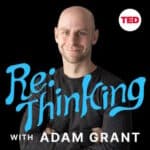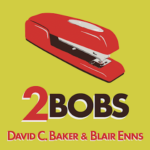Reading Time: < 1 min I do a lot of things to try to remember the things that I read and watch. Using a book as an example, I might write some blog posts about it, maybe share it on a podcast, and see quotes in my Readwise reviews. Even then, if I reread the book a few years later, […]
Learning
Write about what you don’t know
Reading Time: < 1 min As you may know, I’m writing on here every day to try to help myself. I share these learnings in the hope that they’re of benefit to you as well, but they’re largely to help me unpack new ideas and concepts that I learn about. A recent episode of Adam Grant’s “ReThinking” podcast with guest […]
Learning Line by Line
Reading Time: 2 min One of the new apps that I’ve added to my morning routine is a very simple one called “LineByLine” (I say “app”, but I think it’s just that website – no mobile app). While Anki is fantastic for learning atomic pieces of data (countries, names, facts, etc), it’s not great for memorizing long pieces of […]
Do your years of experience matter?
Reading Time: < 1 min Years of experience can be beneficial, but it often depends on what was in those years. As I shared last year, experience isn’t the same as practice. For example, most people have decades of experience typing on a computer, but only those that specifically practice at improving will get any better at it. In his […]
Ideas that challenge
Reading Time: < 1 min I love being challenged by new ideas. I’ll certainly defend my point of view on any given subject, but I try to remain open to other possibilities. As Daniel Kahneman has said, it can be a great to be proven wrong because then you are “less wrong that you were before“. On a recent episode […]
Goals or not?
Reading Time: 2 min I recently read Jim Rohn’s classic book “7 Strategies for Wealth and Happiness“. As I’ve done with a few books lately, I had a brief discussion about it with GPT-4o to see if there were insights that I missed. I asked for the main takeaway from the book and got this response: One of the […]
Creativity isn’t about writing or drawing
Reading Time: < 1 min I consider myself to be rather creative when it comes to solving problems, but not at all creative when it comes to art. So does that make me “creative” or not? In a fantastic podcast episode of The Futur, Blair Enns referenced Mihaly Csikszentmihalyi with a simple quote that aims to add some clarity to […]
Make mistakes once
Reading Time: < 1 min Making mistakes can be a fantastic way to learn, even if you sometimes make them intentionally. Given that they’re a way to learn, though, repeatedly making the same one isn’t going to be very effective. In a conversation last year with Donald Miller, Seth Godin said something to the effect of: “Encourage people to make […]
Truths depend on our own point of view
Reading Time: 2 min There are a lot of absolute truths in the world, but many are subjective. For example, I can 100% prove that Chick-Fil-A has the fastest drive-thru of all similar restaurants, but I can also 100% prove that they have the slowest. Both are true, but they depend on your point of view. In Star Wars: […]
Wantrepreneurs are content consumers
Reading Time: 2 min People that work to grow their business generally fall into one of two camps: entrepreneurs and wantrepreneurs. Entrepreneurs work with their plan, and wantrepreneurs just hope that things work out along the way. Both can succeed, but the odds are much higher for one over the other. It reminds me a bit of Antoine de […]








